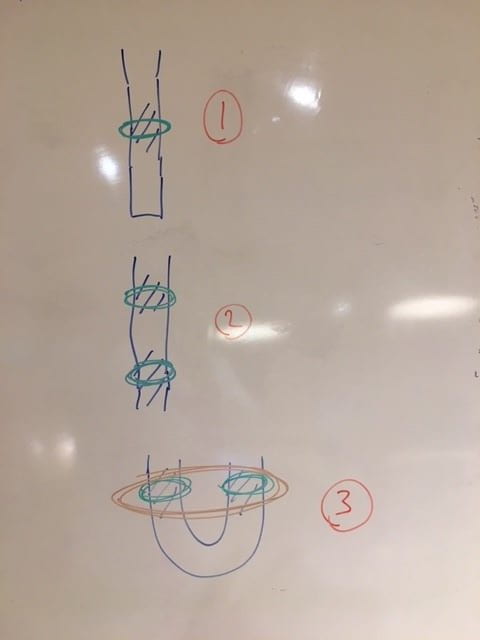Variability in the height of the Tropopause
The tropopause is the boundary between the troposphere and the atmosphere. It is literally defined as the point where temperature at altitude first stops decreasing and starts to increase.
The tropopause is not at a fixed height around the Earth. It varies in height from approximately 9 km at the poles to over 20km at the equator. The reason for the variation is that the tropopause is driven by a series of “cells”. These are areas of circulating air. There three main cells in each hemisphere of the Earth, they are (from equator to poles) the Hadley Cell, Ferrel Cell and the Polar Cell.
At the equator, the warm air drives powerful currents up to 20km. In the northern hemisphere these currents then circulate northwards, lose their heat and descend at approximately 30o north. This is the Hadley Cell. This descending air drives another cell rotating in the opposite direction from approximately 30o north to approximately 60o north. This is called the Ferrel Cell. The Ferrel Cell in turn drives the Polar Cell in the opposite direction again. The Hadley Cell, Ferrel Cell and the Polar Cell act like a set of “cogs” driving against each other. As we move northwards, the heat on the atmosphere reduces and the height of these cells reduces. Hence the height of the tropopause also reduces.
Between the Ferrell Cell and Polar Cell, the polar jet stream flows from east to west at about 60o north.
The UK sits between approximately 50o and 60o north. Close to the boundary between the Ferrel Cell and the Polar Cell and also often directly below the polar jet stream. This helps to explain why our weather is often so changeable.
For our project, this explains why we have to be so careful on exactly when to launch our balloon.
We expect to encounter the tropopause at approximately 12km. Our temperature is likely to be at least -40o C. We are also measuring humidity on our payload and we expect that the humidity readings will also fall to very low levels at the tropopause. This is because most of the water vapour in the atmosphere is below this level.
In the picture below, you can see the various cells in our atmosphere and the polar jet stream. You can also see the variation in the height of the tropopause as you move from pole to equator.

references:
http://www-das.uwyo.edu/~geerts/cwx/notes/chap01/tropo.html
https://en.wikipedia.org/wiki/Tropopause
https://www.quora.com/Why-is-the-troposphere-thicker-over-the-Equator















